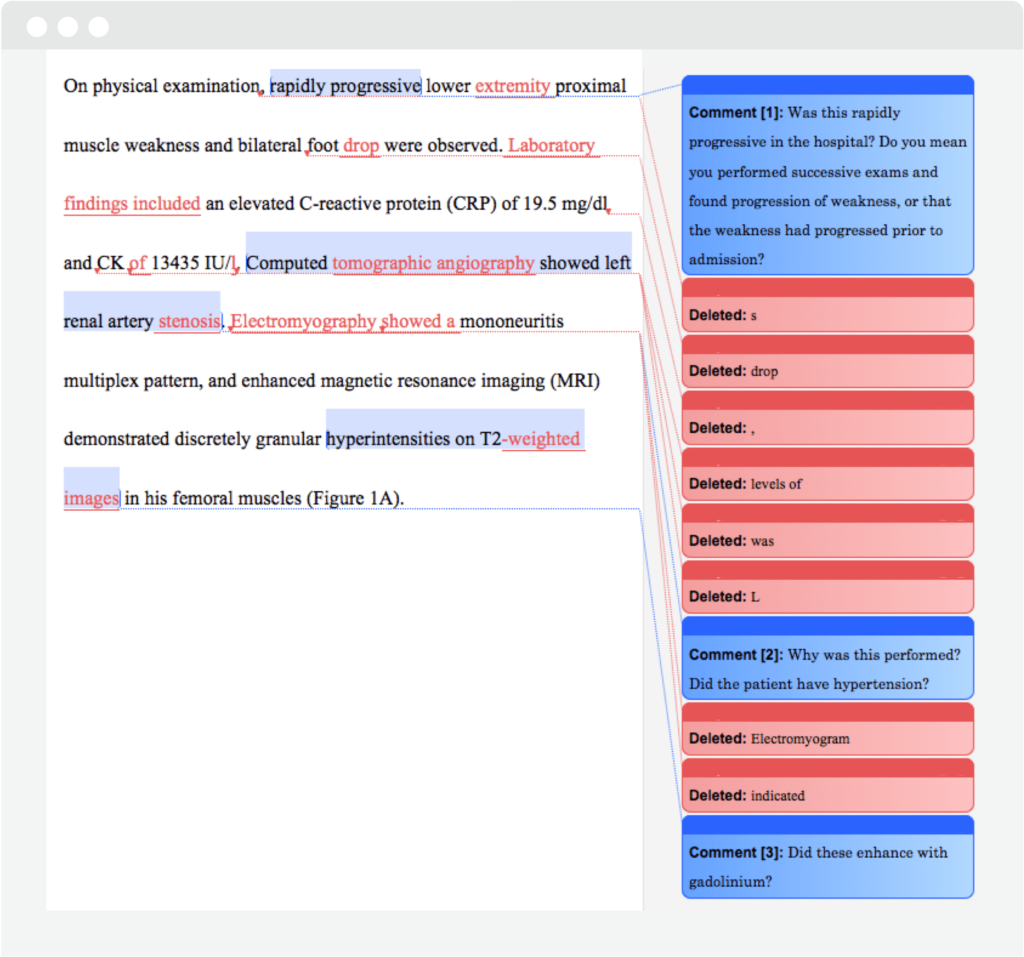Q: What is Collaborative Editing?
A: Collaboration and iteration to bring out the full value of your paper.
"Single-pass editing is fine for brushing up language, but can’t bring out the full value of your research.
"Collaborative editing by Dmed is based on collaboration and iteration with our professional expert editors. By combining your field knowledge with our editing expertise, it’s the best way to bring out the full value of your research."
A powerful approach to maximum impact
Collaborative Editing maximizes the impact of your paper. Built around collaboration with our editors and iteration across multiple versions, Collaborative Editing looks at both the language of your paper and the assumptions, documentation, and implications of your research. By combining your field expertise with our authoring experience, your paper will bring out the full value of your research.
Thousands of Japan's most forward-thinking scientists maximize their impact and demonstrate their scientific competence with Collaborative Editing.
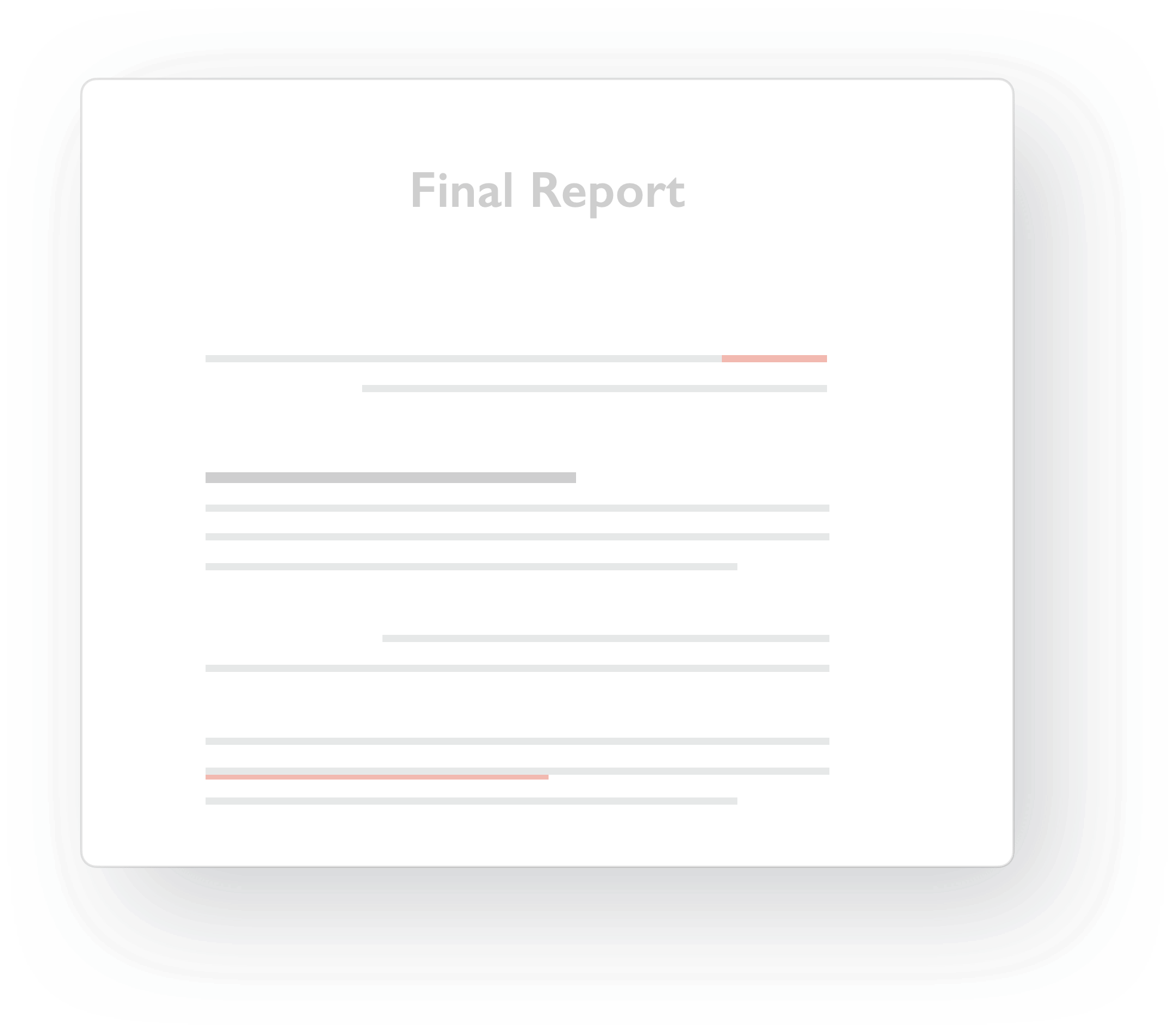
"The more we revise the manuscript, the more new insights emerge among our research team."
Dr T.K., Jichi Medical University
A process to maximize impact
Collaboration and iteration reflect the normal lifecycle of a paper: write the draft - share & discuss - gather new insights - write again - and onward. Each step builds and improves on the last. It's the best way to engage the full brilliance of your team.
Develop new insights
Collaborative Editing inspires new insights among your entire research team. You'll be amazed at the extra impact you add, even for papers you thought finalized.
Edit beyond language
Edit your paper beyond language to encompass the whole paper - its assumptions, documentation and implications. We work with thousands of papers every year, and know publication success factors.
Grow your writing ability
Dmed's editing style is a master class in paper writing. Collaboration and iteration with our highly experienced editors sharpens your research approach and teaches the skills needed to craft high-impact papers.
Collaborate with your editor
Collaboration brings out the best of your paper. With your Dmed editor, you do Q&A, swap comments, and exchange ideas1. Every exchange strengthens your paper, engages your team, and brings out the full value of your research.
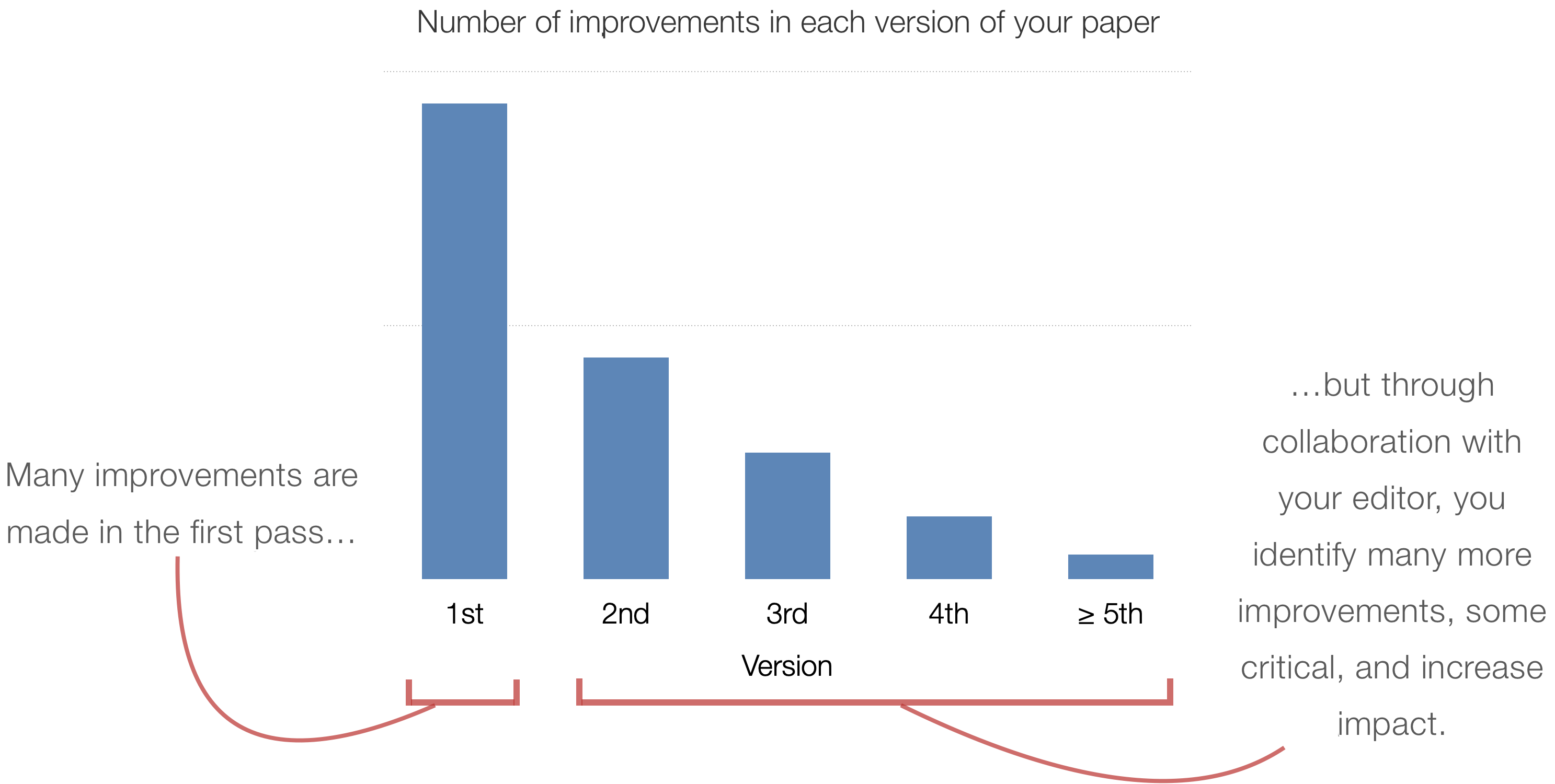
Single-pass editing is fine for brushing up language, but can’t bring out the full value of your research.
1 With Dmed’s translation support, if you need it.
Iterate across multiple versions
Counting rounds of editing is obsolete. Well-organized papers and highly experienced teams may require only one. Others benefit from additional review. We continue editing until you've expressed the full value of your research - no fuss, and no extra charge. Work with your expert Dmed editor through multiple versions, applying the benefits of collaboration at each stage. Review, reconsider and perfect; strengthen your paper step-by-step and new insight-to-new insight.
As many rounds as your paper needs
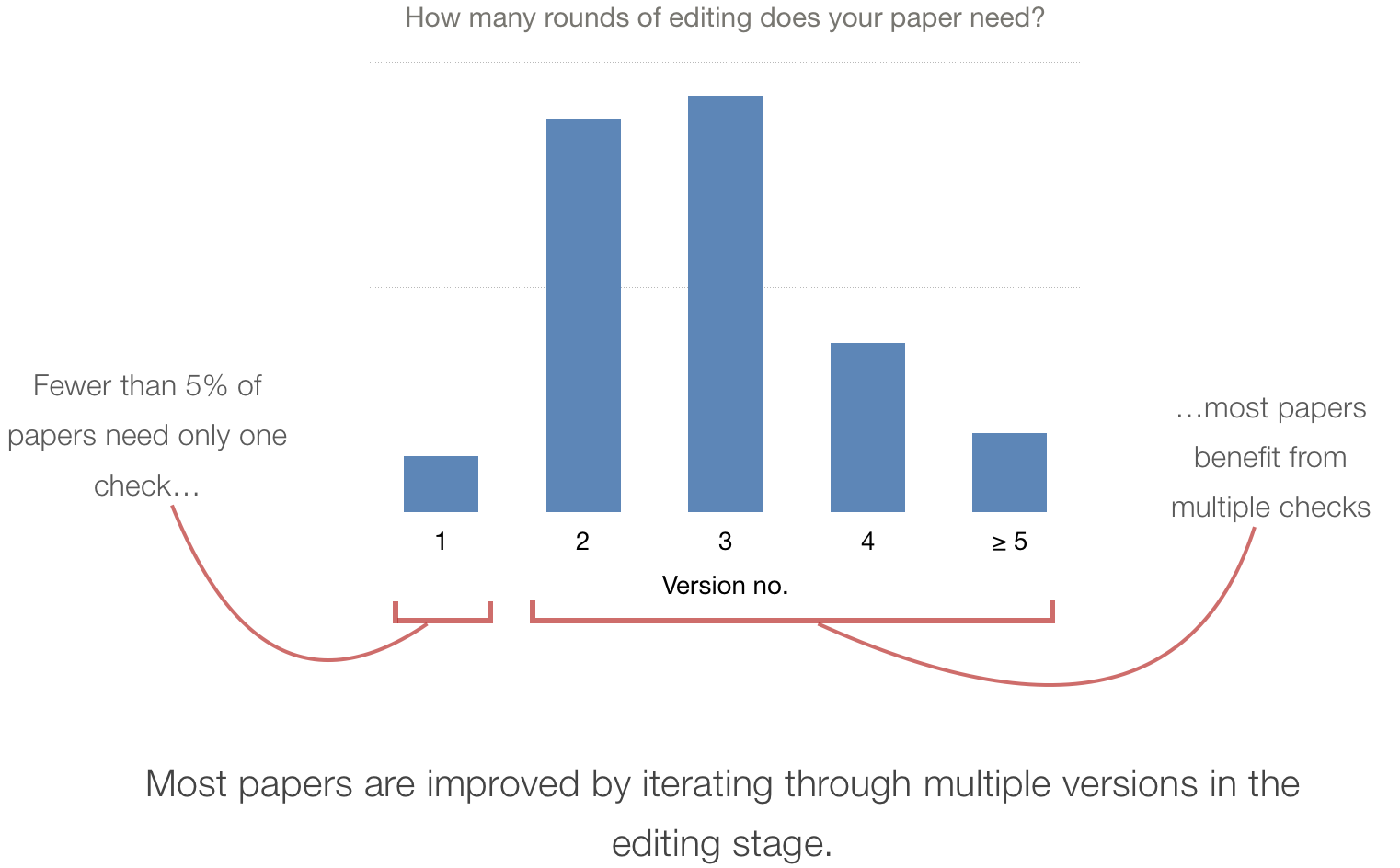
Most papers substantially benefit from iteration through multiple versions.
Collaboration: a case study
Collaborate to 'right-size' your ideas. Here, a simple question to brush up a sentence triggered additional text to emphasize an important point. Collaborative Editing is specifically designed to bring out this type of interaction.
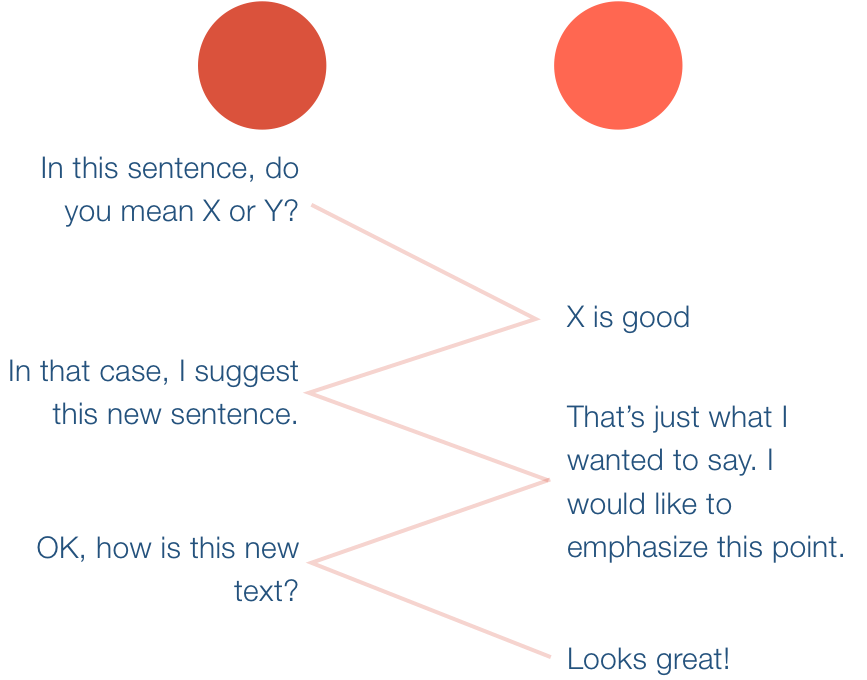
Iterate to the final manuscript
You wrote your paper iteratively, from first draft to final manuscript.
Collaborative Editing extends the iterative process right into the editing stage. Only this time, you have an experienced Dmed editor in support. It’s the best way to engage the full brilliance of your team, right up until submission of your completed manuscript.

Single-pass editing
Single-pass editing is fine for brushing up language, but...
Collaborative Editing
...only Collaborative Editing brings out the full value of your research
Collaborative editing is economical
Your study represents hundreds or thousands of hours of work, and the paper another 50 to 100 hours or more. It's a huge investment in time, and in your career.
When it comes time to submit, some authors think any grammatically correct paper will do. Our experience says otherwise: reviewers and readers judge a paper by both its contents and the way it is written. Simply said, good writing conveys scientific competence.
Too often we see papers that are grammatically correct but poorly expressed. Because they fail to capture the true value of the science, they represent the false economy of a single-pass, low cost editing process.
The intense effort in getting your study done and the paper written should not stop at the editing stage.
Collaborative Editing is the best way to maximize the value of your research. Through a rigorous Collaboration + Iteration process, Collaborative Editing ensures that every idea is expressed with exactly the right emphasis and nuance, within the overall structure of the paper - sentence, paragraph and section. All in beautiful and elegant text.
Collaborative Editing is the economic way to maximize the value of your research.
Style conveys competence
It's hard to measure, but the effect is real: well-written papers are more likely to be accepted. Collaborative Editing gives you three methods.
Write beautiful, logical text.
First, start with beautiful, logical 'native-rashi' text that conveys meaning with elegance and concision. Dmed’s 1 2 3 Method - based on 1 definition, 2 requirements and 3 rules - is the foundation of clear, beautiful text.
Learn how: Thousands of Japanese researchers have learnt the 1 definition, 2 requirements and 3 rules of beautiful, logical text. Download the guide.
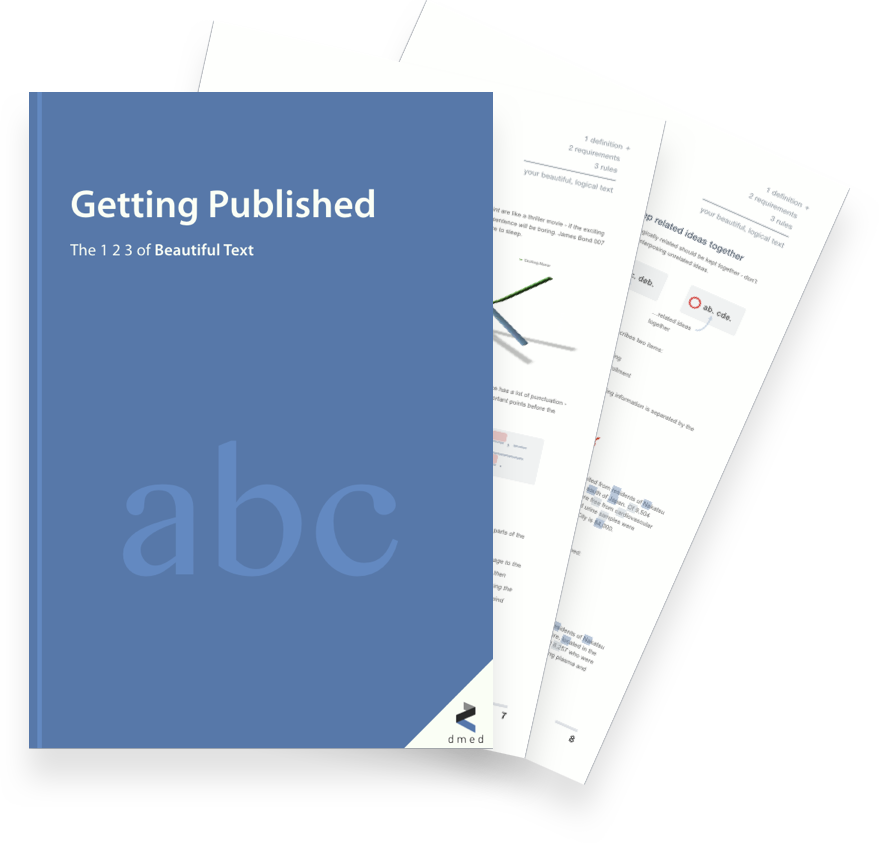

Tell a compelling story.
Then, engage the reader’s intellectual curiosity by telling a convincing story. Facilitate the reader's journey through your paper by structuring it within the framework of global standards.
Example: Strengthen impact by placing the key intellectual questions behind your research in strategic sentences in the Introduction.

Group ideas in paragraphs with unity, organisation and coherence.
Finally, use paragraphs to organize your ideas into integrated, logically related series of thoughts that satisfy your reader’s intellectual curiosity.

Editing levels
Three levels of editing to meet your needs.
Brief
For experienced authors with a well-organised and well-written paper that needs a final language check before submission.
Standard
Advanced editing based on collaboration with your editor and iteration through multiple versions. The best choice for most papers.
Standard Plus
Our maximum level of care, with a focus on highest impact for a truly standout paper.

For well-organized papers requiring native text editing before submission
Brief
Brief is a rapid service that focuses on final improvements to text for papers that are well written by experienced authors.
Brief check is also suitable for brushing up a draft paper before sending it to coauthors for their input.
Get started with BriefYour paper, submission-ready and with the complete benefits of Dmed’s Collaborative Editing

Standard
Deep collaborative editing of your whole paper contents which goes beyond grammar and spelling checks.
Your paper is deeply analyzed by our native scientific writers, to optimize expression, reading flow, and scientific logic. An optimized text is easier to read, conveys your science clearly and increases your chances of acceptance.
Standard provides unlimited rounds of editing until you and our coauthors consider that the manuscript is finalized and ready for submission.
Get started with StandardA highly optimized paper with maximum impact for your most important findings
Standard Plus
All the benefits of a Standard editing, but with special care for your special needs.
Standard Plus offers mini translation, for example, for small sections of text that are best explained to Dmed staff in your native language before writing them in English.* Alternative phrasing is also offered to avoid potential self-plagiarism. With Standard Plus, you can be sure your paper optimization is maximized.
* Must be under 5% of total text.
Get started with Standard PlusPRICING SHEET
See all charges for Collaborative Editing here
Dmed powers Japan’s leading scientists.
You edited my manuscript in 1996 when I was a young researcher at X Corp. Thanks to your edits, this manuscript was accepted by JBC without any comments from editors/reviewers (immediate acceptance). I remember I was so excited when I heard the news.
I went to NIH from 2001 to 2003 to learn about schizophrenia. Then, in 2008, I went back to the US to build a neuroscience team at our US research institute. I worked there as group leader from 2008 to 2014. Now I am back in Japan and head up neuroscience research in X both in Japan and the US.
I just wanted to thank Dmed for your editing of our manuscripts many times. You look into scientific contexts and give us hard questions sometimes.

The Dmed Guide to Getting Published: The 1 2 3 of Beautiful Text
Thousands of Japanese researchers have learnt the 1 definition, 2 requirements and 3 rules of beautiful, logical text. Now you can too.
- how to structure sentences for maximize impact
- how to emphasize key points
- writing to achieve compelling text
Ready to get started?
or call 03-6459-1545
Mon-Fri 9:30-18:00

